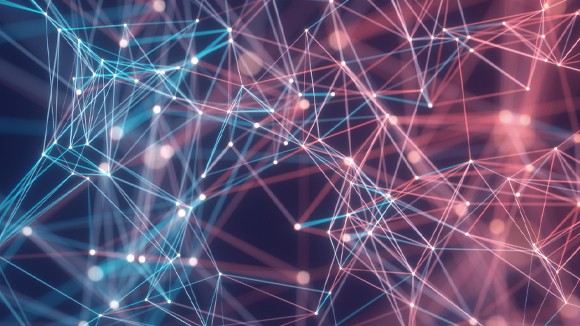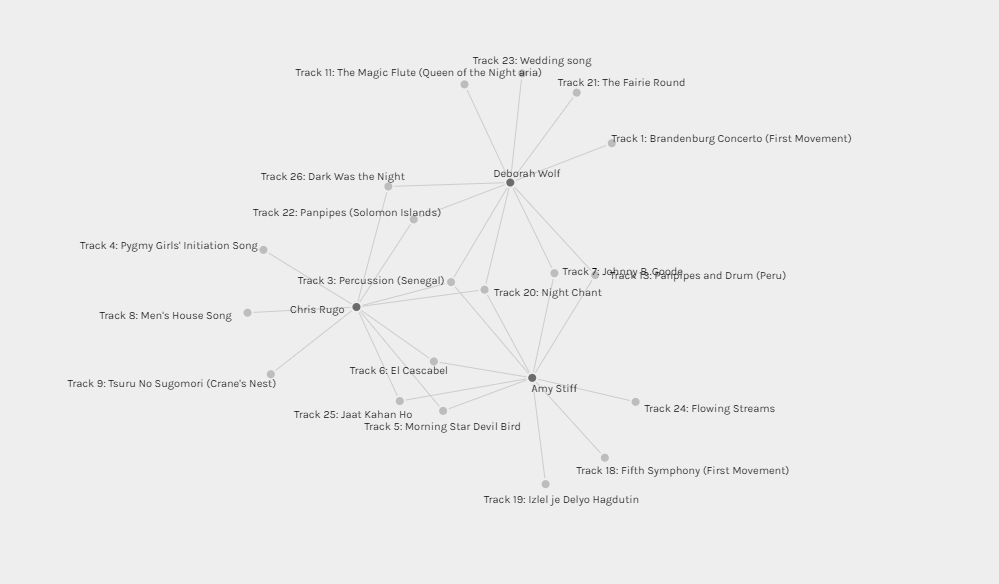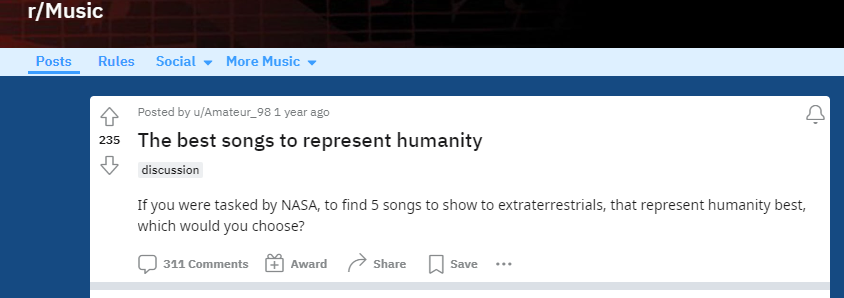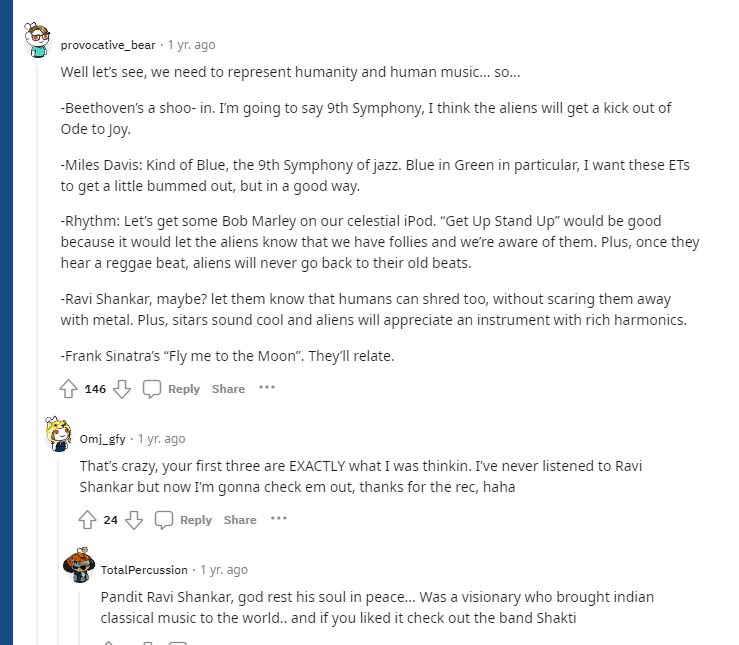
The visualization can certainly give you the links and connections between curators and their choices, however, it does not indicate why those particular tracks were chosen. For instance, for my own, I reordered the tracks in a specific way to match the evolutionary progress of the planet that was presented in the first part of the record. Each person has their own personal reasons for choosing what they did, including the original NASA curators of the Golden Record.
Without going through each person’s website, there is no way to understand the reasons behind their choices, unless we make some grand assumptions about the culture and biases of the people curating the lists. For example, while they are from all different backgrounds and places in the world, they all have an interest in education/technology, all are in a Master’s program at a Canadian University and have a high degree of literacy. Other than these commonalities, however, you cannot make assumptions about why people chose the tracks they did and why others were rejected.
For example, Amy and I have 4 tracks in common. These tracks were chosen for very different reasons – mine as above, Amy’s for how the piece made her feel, generally hopeful and positive. For Chris and I and Amy, there are only two tracks that all three of us have in common. The reasons are very different, mine for evolutionary progress, Amy for personal feelings and Chris for the de-colonizing aspect of each of the song on the list, excluding white, European settlers.

The most popular choice was Track 6: El Cascabel (though I didn’t chose this one). The least popular was Track 12: Tchakrulo. There is no explanation through this tool why these choices were the most popular or least popular, we just get the data. To understand why these were chosen or discarded, one has to go to the source to discover the reasons. While two tracks were tied with 20 out of 20 choosing them, there were only 4 nodes in common between these two. Again, there are no explanations as to why this was the case.
Overall, one conclusion that can be drawn is that the person curating the list/selection has innate biases that will influence what makes the list and what doesn’t. The original list itself was selected by humans with their own biases, with no explanation of why, in the vast collection of worldwide music and song, these particular pieces were chosen over others. In the podcast Twenty Thousand Hertz (Voyager Golden Record, 2019) about the Golden Record collection, the curator(s) discuss their reasoning for choosing the 21 songs they did to represent humanity as a whole.
While it is very difficult to be completely without bias, one needs to recognize and understand the reasoning behind the bias. Setting clear parameters as to why the pieces were chosen in the first place can contribute to understanding the selection. For example, many people chose the pieces they did because of the way the piece of music makes them feel – this experience may be very different for each individual. Others were more logical about choices, though even the logical choices were biased. It would be interesting to set the list of a representation of humanity to a true computer intelligence and see what it comes up with. In her book “Atlas of AI”, Kate Crawford (2021) says there is no true artificial intelligence. All computer data is dependant upon many human factors – the computational power available, parameters input, what data is chosen to input in the first place, and so on (Crawford, 2021).

A quick Google search of “what music best represents humanity” reveals a huge variety of opinions and lists as varied as the population itself. This list, from Beethoven to Bob Marley to Frank Sinatra, is representative of mostly Western/North American culture, who make up a huge percentage of Reddit users. An example of inherent unconscious cultural bias.

It would be intriguing to see what a farm worker from Nepal would list, or someone from a Muslim or Communist community would list as representative of humanity as a whole.
Any list, curated by human beings, is going to inherently include choices made from personal context and exclude those from personal context, regardless of how logically the parameters are applied. This is particularly true for collections that are more emotive in nature, such as art.
References
Humanities, D. (2020, August 3). Palladio – A Network Analysis and Data Visualization DH Tool [Video]. YouTube. https://www.youtube.com/watch?v=Sl0LJ7_WZ_w&feature=youtu.be
Francisco, F. A. M. O. S. (2021, May 5). Kate Crawford on “Atlas of AI: Power, Politics, and the Planetary Costs of Artificial Intelligence” [Video]. YouTube: Virtual Wednesdays. https://www.youtube.com/live/KcefG-0InLE?feature=share
Smith Rumsey, A. (2017, February 7). Why Digitize?. CLIR. https://www.clir.org/pubs/reports/pub80-smith/pub80-2/
Voyager golden record (D. Taylor, Interviewer). (2019, April). Defacto Sound. https://megaphone.link/TTH4214315391
